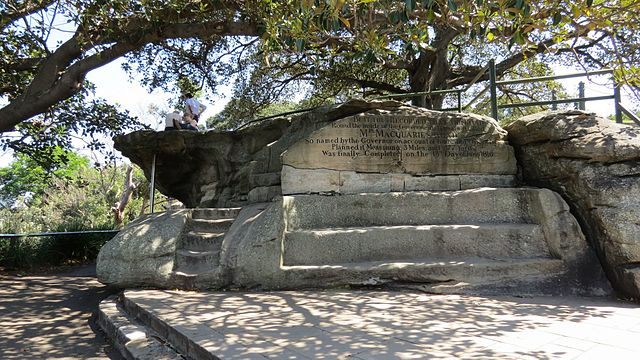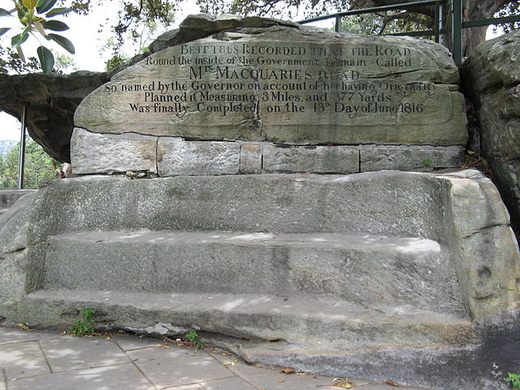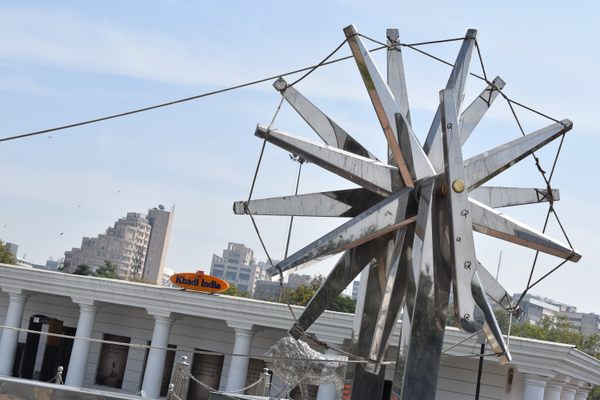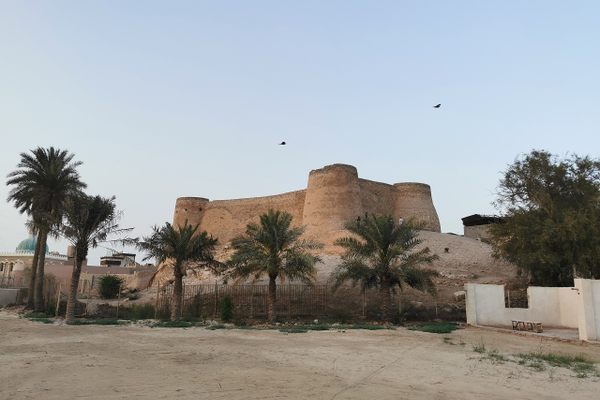AO Edited
Mrs. Macquarie’s Chair
A 19th-century perch for spotting sailing ships now boasts one of the most iconic views in the Southern Hemisphere.
On a promontory extending into Sydney Harbor, New South Wales, Australia, are a primitive bench and steps hand-hewn into the exposed sandstone rock. The seating area was carved on-site in 1810 by convicted laborers. It was created for Elizabeth Henrietta Macquarie, the wife of Major-General Lachlan Macquarie, who served as Governor of New South Wales from 1810 to 1821.
Perched at the end of the peninsula that became known as Mrs. Macquarie’s Point, it was a frequent resting spot for the Governor’s wife. Her habit was to sit gazing over the harbor, hoping to spot ships arriving from and returning to her homeland, Great Britain. Many years later, that view would become one of the most recognizable harbor views in the world, including, as it does, the Sydney Opera House and the Sydney Harbor Bridge.
Inscribed in the stone above the bench is a dedication to “Mrs. Macquarie’s Road,” which once ended at the Point: “Be it thus Recorded that the Road, Round the inside of the Government Domain Called, Mrs. Macquarie’s road, So named by the Governor on account of her having Originally, Planned it Measuring 3 Miles, and 377 Yards, Was finally Completed on the 13th Day of June 1816.”
The three-mile-long road was constructed between 1813 and 1816 to facilitate Mrs. Macquarie’s visits to the Point. Although the road no longer exists, part of its culvert is still visible in the nearby Royal Botanic Gardens. The double brick overpass, known as the Macquarie Culvert, is likely the oldest masonry bridge in Australia.
Lachlan Macquarie and his wife lived and served in Australia from 1810 to 1821. They played significant roles in the evolution of New South Wales from a penal colony of convicted laborers to a free settlement of landholders and skilled professionals. An ardent supporter of her husband’s views on convict reform, Mrs. Macquarie also took particular interest in advancing the welfare of female convicts and the indigenous people. She shared her husband’s passion for architecture and supported his plans to modernize Sydney Town by constructing roads, buildings, and public works. Mrs. Macquarie was also a champion of hay-making in the colony.
Over time, the Governor’s progressive views on emancipated convicts and his lavish spending of government money for public construction drew criticism from bureaucrats in England and Australia’s large landowners. These detractions led to an 1819 investigation of Macquarie’s administration and his offer to resign from his post. The Governor stepped down in 1821 and returned to Scotland with his wife. He died in 1824 while still defending himself against charges of mismanagement in New South Wales.
Macquairie’s role in establishing Australia in the 19th century is inestimable. “Father of Australia” is inscribed on his grave. He was, in fact, the first person to use the written term “Australia” when referring to the island. So profound was the Macquaries’ impact on the colonization of Australia that many places and things are named in their honor, including those the Governor named himself.




















Follow us on Twitter to get the latest on the world's hidden wonders.
Like us on Facebook to get the latest on the world's hidden wonders.
Follow us on Twitter Like us on Facebook